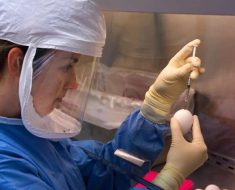The Digital Medicine Society (DiMe) on Monday revealed four toolkits to help healthcare and life science organizations use data from sensors like wearables and remote patient monitoring systems at scale.
The four toolkits are based on resources derived from the society’s Sensor Data Integrations project, which includes organizations like Amazon Web Services, Oracle, the Moffitt Cancer Center, Takeda and the U.S. Department of Veterans Affairs.
DiMe CEO Jennifer Goldsack told MobiHealthNews the first kit offers a logical data architecture that’s meant to serve as a blueprint for healthcare organizations as they build out their digital tools. It includes reference architectures that show how it can be successfully implemented, best practices for privacy and security, and a design tool that lets users map out data flow.
The other toolkits offer a database of standards in different regions and for different uses, resources to help organizations determine their capacity and staffing, and an implementation toolkit with a quick start guide and priorities calculator.
Goldsack said using sensors for patient care isn’t necessarily a technology challenge, but it is an implementation one. The field is still relatively new, and there are a variety of point solutions that won’t easily scale.
“It doesn’t matter if every single one of the patients you are here to serve are using these technologies, and they trust them. And indeed, you trust them,” she said. “But if you can’t then access that data to make a timely decision, it’s not valuable. So, those are the three vectors that we talk about a lot: accessibility, reliability and trustworthiness.”
WHY IT MATTERS
If organizations want to use sensor data effectively, a logical clinical workflow is necessary, Goldsack said. The healthcare industry is already facing a shortage of physicians and nurses, and many providers are burned out after more than two years fighting the COVID-19 pandemic.
“They have a packed schedule of visits. Then, they get to the end of the day, and they have to do all of their charting. Now, they’re also managing a patient portal, and they have to respond to all of the asynchronous communication,” she said.
“Are we then really going to ask them to flick through dashboard after dashboard after dashboard for every single one of their patients who’s making use of sensor technology? That doesn’t work. When clinicians are so precious right now within our industry, it’s a fundamentally unacceptable premise.”
THE LARGER TREND
A number of startups focus on remote patient monitoring, including Biofourmis, Athelas, Alio and VitalConnect.
This also isn’t DiMe’s first toolkit. It previously released resources on digital endpoints for research and effective transitions from virtual-first care. Goldsack said the sensor data integration work builds on DiMe’s earlier efforts.
“If we really want to realize the promise of all of these technologies and the benefits that they can bring to patients and clinicians, we have to build to scale,” she said.
“Otherwise, we’re going to take this half step. There’s going to be all these intermediary steps in order to really derive value from the data. It’s not going to be effective for everyone; it’s not going to be efficient, and it’s going to limit our ability to capture the value of these new flows of data.”
More regional news

HIMSSCast: What does the future of AI in healthcare look like?

Five recommendations for improving clinical communication

Singapore-headquartered Intellect raises additional $10M in Series A extension
Source: Read Full Article





